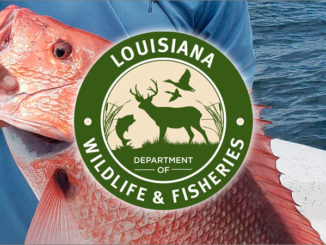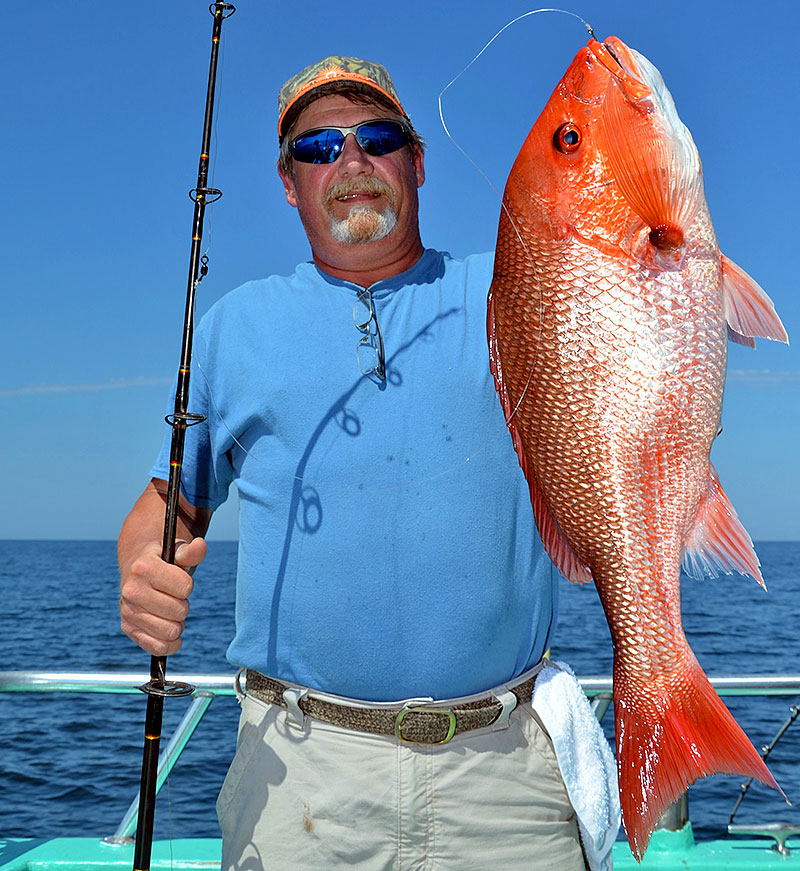
Anglers have higher hopes and limits for this game-changing Gulf favorite
As twin outboards steadily hummed, pushing the boat farther out to sea, the mate occupied his time by cutting up small freshly-caught jacks to use for bait. About 35 miles from shore, the engines powered down to idle as the captain positioned the vessel over a productive natural bottom formation approximately 200 feet below us.
Finished with cutting the bait, the mate tossed fish scraps into the azure waters of the Gulf of Mexico. Minutes later, the blue waters surrounding the boat turned bright crimson and churned with activity as red snapper in the 5- to 15-pound range savagely attacked the scraps. It was dinner time! Our reels barely let out line before ravenous red snapper gulped down our baits as fast as we could get them in the water.
For many people along the Gulf Coast, offshore fishing begins and ends with red snapper season. It’s as simple as that. The 2023 Louisiana snapper season opened on May 26 in state and federal waters. The close won’t come until after Louisiana anglers reach their increased federal quota.
“Our state quota in 2022 was 809,000 pounds,” said Jason Adriance, the Marine Finfish Program Manager for the Louisiana Department of Wildlife and Fisheries. “We came in just under the quota by about 7,000 pounds. This year, the quota went up to 934,587 pounds. Since the quota went up, we decided to keep the snapper season open seven days a week. We will monitor the catch rates weekly to see how we’re doing. We are going to try to keep the season open through Labor Day weekend.”
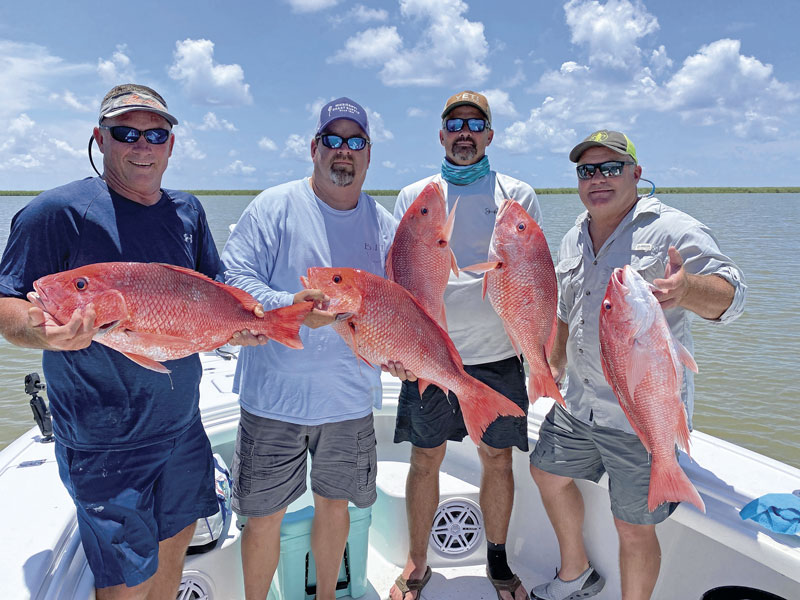
From two to three
New this year, the daily limit changed from two to three red snapper per person. Last year, the state allowed three fish per person each day, but only on weekends. This year, anglers can keep up to three any day that the season stays open. It’s important to note: the minimum size limit remains 16 inches in length.
“The red snapper population is in good shape off Louisiana,” Adriance said. “We have a little more allocation this year, so hopefully that provides more opportunities for our anglers.”
The daily creel limit remains two per person for anglers fishing on federally permitted “for hire” charter boats. Moreover, the captain and crew on those boats may not keep their snapper limits.
“The federal ‘for-hire’ red snapper season opens on June 1 and generally runs until the first few days of August,” Adriance said. “The National Oceanic and Atmospheric Administration will announce when the federal season ends. For reef fish, state waters end nine miles from shore. For all other fish, state waters go out three miles from shore. State ‘for-hire’ vessels without a federal permit may not fish for or possess red snapper in federal waters.”
Snapper anglers have a responsibility to keep up with the regulations, the waters they are fishing in and the sometimes-changing season dates.
The other good news is that sportsmen can find red snapper practically anywhere off the Louisiana coast where deep water and hard structures exist. Anglers might start seeing red snapper in waters as shallow as 30 feet deep and out as far as 400.
Some of the best snapper fishing in the Gulf occurs between Grand Isle and the Mississippi River Delta where water drops incredibly deep fast.
“Red snapper fishing is as good as it gets off the southeastern Louisiana coast,” said Damon McKnight with Super Strike Charters, (985-640-0772, www.superstrikecharters.com), who runs out of Venice and offers lodging at Cypress Cove Marina. “No other area in the northern Gulf can produce the quantity and size fish that Louisiana does. Most days, we catch a quick limit and then target other species.”
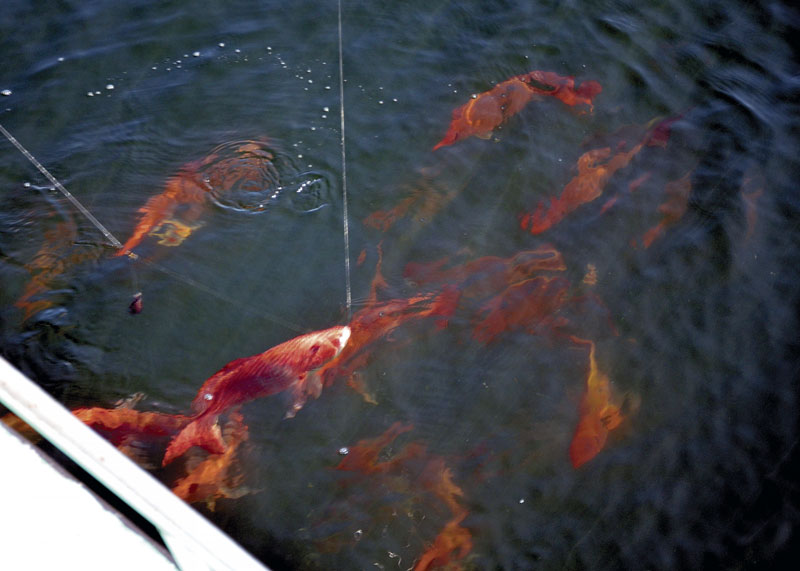
He starts at 100
Out of Venice, water rapidly plunges to more than 100 feet deep soon after leaving the delta passes. Smaller recreational boats can reach good snapper water as close as three miles from shore. These close structures produce many 8- to 10-pound snapper, but they receive significant pressure, especially early in the season. Therefore, bigger boats typically go farther offshore to fish deeper waters.
“For red snapper, I like to start in at least 100 feet of water,” McKnight said. “The maximum depth I prefer to fish is about 250 feet. Most days, we catch snapper less than three miles out until about mid-July. Usually, we can find them at the deeper depths in July and August. Some of the best snapper areas out of Venice are the 7-mile rigs. People who travel a little farther out to deeper structure and natural bottom formations might find snapper in the 12- to 18-pound range.”
McKnight also recommended fishing the 12-mile rigs (South Pass 62, West Delta 93, 143 and 152) out of Venice. People with good sonar systems can find many underwater structures in the 60- to 200-foot depth range that hold fish. After marking fish, drop a line down to see what lurks below.
Off the Grand Isle-Fourchon area, water also plummets quickly. This area produced the world record snapper on June 23, 1996. Fishing South Timbalier Block 185 south of Fourchon, “Doc” Kennedy set the all-tackle world record at 50.25 pounds. That fish hit a chunk of bluefish in about 60 feet of water.
“The fishing seems to be getting better every year,” said Jamie Gaspard with Pure Adrenalin Fishing Charters (225-572-5788, www.pureadrenalinfishingcharters.com) who runs out of the Grand Isle and Fourchon area. “I try to find at least 200 feet of water before I start fishing for snapper. For bigger fish, we usually fish the South Timbalier blocks about 30 to 35 miles from shore. Most of our red snapper weigh from 10 to 20 pounds. The biggest we’ve ever caught weighed 37 pounds.”
Off Grand Isle or Fourchon, boats reach minimum snapper depths about 16 to 18 miles from shore. Many smaller recreational boats fish the Grand Isle 40 blocks or just outside the massive Louisiana Offshore Oil Port. The “LOOP” sits in about 115 feet of water roughly 18 nautical miles south of Port Fourchon.
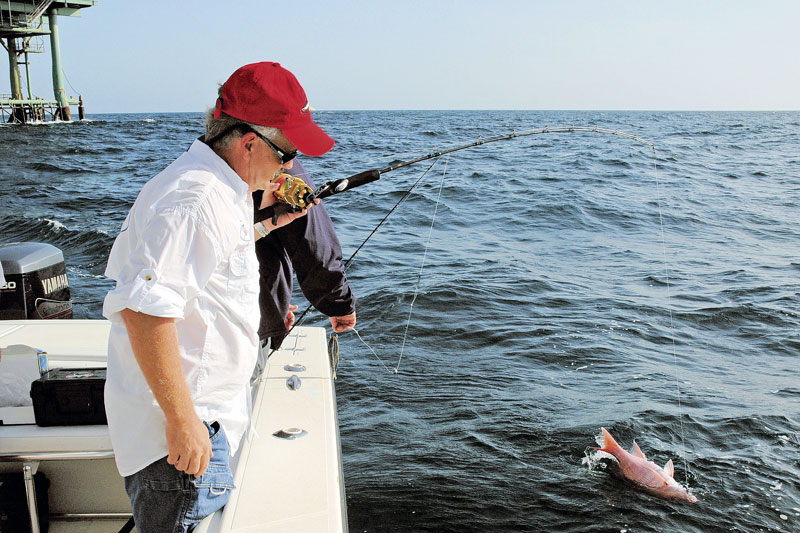
Send ‘em lunch
Next to a rig or over a good reef, most anglers simply send down a juicy meat slab. Snapper eat frozen baits, such as squid, menhaden (pogies), Spanish sardines, cigar minnows and other natural baits. However, they prefer fresh meat. Many anglers catch blue runners, also called hardtail jacks, bonito or other fish for fresh cut bait. Fish a Carolina rig with the lightest weight necessary tipped with a 5/0 to 16/0 circle hook.
Live baits tend to catch larger snapper as well as big amberjack, grouper and other fish. Live hardtails, mullets, herring, small mackerel, pinfish, croakers and other small fish make excellent attractants. Hook live bait between its eyes so the hook doesn’t go through the brain, killing the fish.
Some anglers use jigs or other artificial baits, but they might sweeten the lure with a piece of fish for flavor and scent. Drop speed jigs, or butterfly jigs, to the bottom. After it hits bottom, vigorously pull it up about eight feet and let it drop again like a dying fish.
Snapper love hard bottom structures, but they regularly rise higher in the water column, perhaps even up to the surface. In the summer, snapper frequently hang near the thermocline, the invisible line that separates warmer upper layers from the cold, dense, lower water layers.
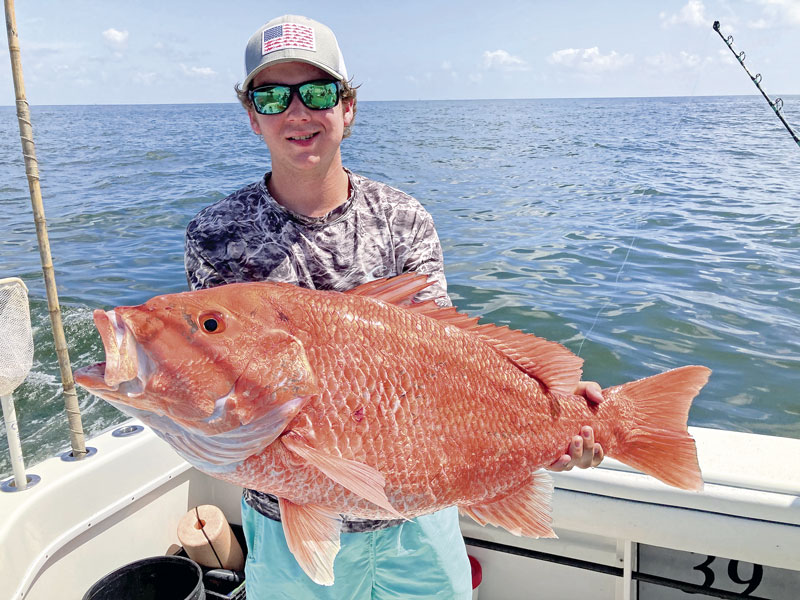
“Bigger fish tend to suspend off the bottom and somewhat off the structure,” Gaspard said. “They won’t be right up against the rig. The bigger fish are not as scared of predators as much so they stay a little more in open water.”
To keep large snapper near the surface and interested, many captains toss chum into the water. Add just enough scent and temptation to hold fish, not feed them. To find where big snapper hover, thumb the reel to feed out line in 10-foot intervals. Pause to test the action at each depth.
When huge snapper come near the surface, rig a drift line baited with a live fish and no added weight. Toss the bait into the chum slick and stick the rod in a holder. The struggling baitfish might entice a giant snapper, or possibly other passing predators, like cobia, mackerel, wahoo, possibly even a sailfish.
Other bonus biters
Besides red snapper, anglers might catch mangroves, lane or vermilion snapper, also called beeliners. The catch might also include triggerfish, spadefish, amberjack, grouper or other species.
“When we want to catch beeliners, we downsize our hooks to a 10/0,” Gaspard said. “We also fish for mangrove snapper with live croakers or shrimp. When fishing for mangroves, we’ll often catch a couple cobia.”
While moving from place to place, many anglers troll for king or Spanish mackerel, tuna, mahi, wahoo and other fish. Also watch for targets of opportunity. Cobia and tripletail commonly hover near weeds or other floating objects. Season dates, regulations and limits vary for different species, so always check before keeping any fish.
“Louisiana is one of the best places in the nation to catch snapper,” Adriance concluded. “While fishing for snapper, people can also catch many other species in the Gulf of Mexico. The state is still the Sportsman’s Paradise for a reason.”
